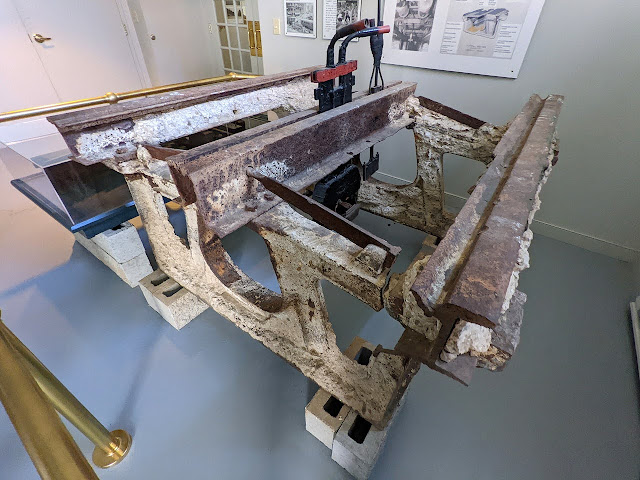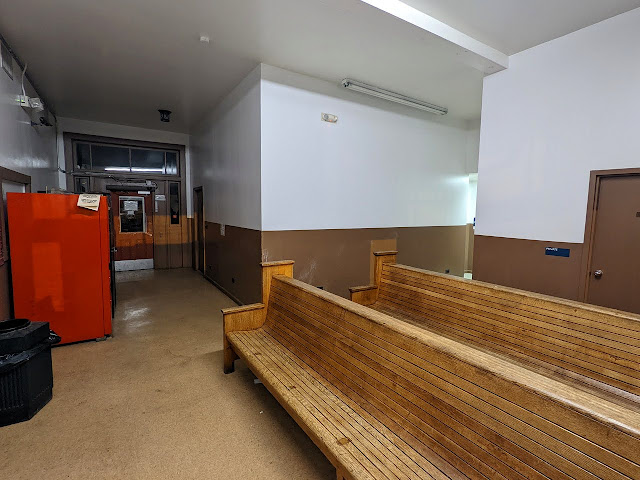Washington DC's claim to streetcar fame was its in-ground conduit electrification, that was necessary due to regulations against the use of overhead trolley wire within the district. Making use of electric conductors installed in old cable car cableways, the system was expensive to maintain and prone to disruption. It was nevertheless a defining feature of the DC streetcar scene and of course the NCTM...does not run any conduit trackage, opting instead for this display on the practice.
The DC streetcar system was also known for its jaunty 1950's livery and in this regard the museum does have one surviving DC PCC, #1101, painted in its iconic livery. However on the day I went it was not running and ws also displayed in a fashion that actively hindered photography with the front in severe low light and the rest standing behind clutter.
Due to the 2003 carbarn fire, the DC streetcar museum is rather light on DC streetcars. Only three additional DC related cars were on display in the main hall, with one of those being the 09 sweeper. Other DC cars are in the storage/restoration barn, but that was not open for tours.
After the fire, the NCTM had to pad out its collection with international streetcars that were readily available for purchase in the 2000's.
The one and only operating car that day was ex-TTC PCC #4602.
The NCTM got a sizable chunk of change as part of the highway induced relocation with a new carbarn and main building, yet compared to other streetcar museums, there was a notable lack of activity.


















































